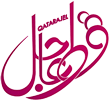The Iran-US Talks 2025 return to the table in Rome. World powers engage in crucial negotiations.
A Deal Once Broken, Now Back on the Table
A decade ago in Vienna, history was made when the United States and Iran shook hands over the Joint Comprehensive Plan of Action (JCPOA) — what the world came to call the Iran Nuclear Deal.
But the optimism didn’t last. When Donald Trump became president, he pulled the U.S. out of the agreement. What followed were years of accusations, threats, and then — complete silence.
Now against all odds, the Iran US talks in 2025 are back, but this time, it’s not about hope. It’s about necessity.
The First Round in Oman: Drawing the Battle Lines
The first round of talks kicked off in Oman. Not much breakthrough happened, but the red lines from both sides were drawn loud and clear.
U.S. Stance: No Nuclear Weapon for Iran
For the United States, the demand is crystal clear — Iran cannot have a nuclear weapon.
“We’re not looking to take their industry or their land. All we’re saying is — you can’t have a nuclear weapon,” U.S. officials stressed.
Verification is non-negotiable. How much uranium is Iran enriching? How closely can they be monitored? That’s the American priority.
Iran’s Stance: Sovereignty and Enrichment Rights
Iran, meanwhile, sees uranium enrichment as a sovereign right — non-negotiable.
“We are prepared to build trust and address concerns, but the core issue of enrichment itself is not negotiable,” said Iranian representatives.
Two sides. Two immovable red lines. And no easy path forward.
Also Read: Iran–US Negotiations: How Iran Forced the US to the Table
Iran-US Talks 2025: Next Stop, Rome
Confusion surrounded the second round’s location — Iran initially said Oman, while the U.S. kept silent. Eventually, reports confirmed the Iran-US talks 2025 will move to Rome.
Who’s Leading the Charge?
- U.S. delegation: Steve Witkov — Trump’s golf buddy and Washington’s envoy to West Asia.
- Iranian delegation: Abbas Araghchi — Iran’s Foreign Minister and an old diplomatic hand.
Oman remains the mediator. Russia has offered its hand to help too, emphasizing that the talks should stay focused strictly on nuclear issues. Meanwhile, Saudi Arabia’s Defense Minister visited Tehran right before the second round, signaling just how much is at stake for the entire region.
Israel’s Secret Plans and Trump’s Intervention
Adding another layer to the drama, Israeli plans to strike Iran’s nuclear facilities had reportedly reached the final stages. They were ready to move — but Donald Trump intervened.
On April 3, Israeli Prime Minister Benjamin Netanyahu called Trump. A few days later, in the Oval Office, Trump dropped a bombshell:
“We’re having direct talks with Iran. It’ll go on Saturday. A big meeting. Let’s see what happens.”
Trump made it clear — he preferred a deal to an all-out war, and he wasn’t about to greenlight an Israeli strike.
For Israel, the red line stays firm: no Iranian nuclear weapon. But for now, diplomacy has been given a chance.
Inside the New Draft Deal: Three Stages of Negotiation
Leaked reports suggest the Iran Nuclear Deal talks 2025 are built around a three-stage plan:
Stage 1: Scaling Down Enrichment
Iran would cut uranium enrichment down to 3.67%, as in the 2015 deal.
In return, Iran would unlock access to billions in frozen assets and gain permission to export small volumes of oil.
Stage 2: Sanctions Relief and Inspections
The U.S. would ease additional sanctions.
Iran would grant full access to International Atomic Energy Agency (IAEA) inspectors to verify compliance.
Stage 3: Shipping Out Enriched Uranium
Iran would ship out its enriched uranium stockpile to a neutral third country.
The U.S. would ratify the deal formally through Congress, making it harder for future presidents to scrap it.
It’s a plan that could potentially balance everyone’s core demands — but it’s fragile, and far from certain.
What the Iran-US Talks 2025 Mean for the Region
For Iran: A Desperate Economic Lifeline
Iran’s economy is crumbling. Inflation is rampant. Millions of Iranians are desperate for some breathing space. A deal could deliver that relief.
For Gulf States: Hope and Unease
Gulf nations like Saudi Arabia and the UAE are cautiously optimistic. Avoiding another regional war is critical, but they also fear that a stronger Iran could shift the regional balance of power.
For Global Oil Markets: A Price Shake-up
If sanctions ease and Iran returns to its previous 3.8 million barrels per day oil export capacity, that’s nearly 2% of global oil demand. It would dramatically bring down oil prices, shaking up global markets.
Iran’s Supreme Leader: Tempering Expectations
Even with negotiations underway, Iran’s Supreme Leader, Ayatollah Ali Khamenei, remains cautious:
“The first steps have been taken well, but we must proceed carefully. We may or may not reach a result, but either way, it’s worth trying.”
The message is clear — success is possible, but far from guaranteed.
Conclusion: A Deal Could Save or Shatter West Asia
As leaders head into the second round of Iran-US talks 2025 in Rome, the stakes couldn’t be higher. A deal could diffuse a dangerous regional crisis — or if talks collapse, it could light the fuse for a wider conflict.
For now, all eyes are on Rome.

